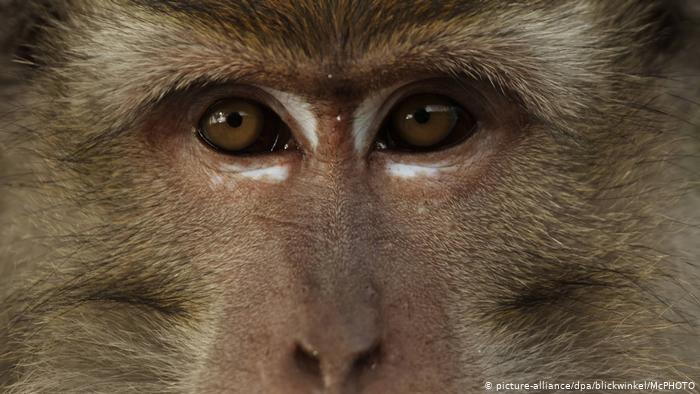Humans and monkeys do not speak the same language, but their ways of thinking are much more similar than previously assumed. This is confirmed by new research results from the University of California, Berkeley, Harvard University and Carnegie Mellon University published in the journal Science Advances.
In an experiment with 100 test subjects from different age groups, cultures and species, the researchers found out that indigenous Chimane people from Bolivia, adults, preschool children from the US and macaque monkeys all have an affinity for so-called recursion.
Abstract concept
Recursion is a cognitive process that takes place in the brain when, for example, a person is arranging words, sentences or symbols that express complex commands, feelings or ideas.

It describes an abstract process in which rules are applied to something that has only come into being through the rules themselves, like a mirror reflecting its own mirror image that then continues indefinitely.
In linguistics, recursion describes the phenomenon that when breaking down a grammatical unit of a particular category, the same category can reappear. Practically all human languages are considered recursive.
The term recursive means backward or self-referential. Recursive patterns are fundamental to syntax and semantics in human language. An example is the nominal phrase "the dog of the wife of the pensioner." This is a sequence of individual nominal phrases that relate to each other and when strung together form a new one.
Another example of recursive structures are inserted subordinate clauses that themselves contain inserted subordinate clauses. By inserting "and" sentences, nested relative clauses or strings of adjectives, infinitely long sentences can be created.
Since these involve complex thought patterns, the researchers initially assumed that the monkeys would have less pronounced recursive abilities.
Learning symbol sequences
The participants were first trained to memorize different sequences of symbols, for example {()} or {[]}. These structures are analogous to certain linguistic nested structures.

The participants from the US and the monkeys used a touch screen to arrange the symbols. A bell signaled the correctness of the sequence; a buzzer went off when a symbol was in the wrong place. The monkeys were rewarded with juice and snacks for the correct arrangement.
Since the Chimanes, natives of the Amazon region of Bolivia, lead a reclusive life with little technology, they were presented with the symbols on paper index cards and received verbal feedback.
Remarkable similarity
In the next step of the experiment, all participants were asked to correctly arrange four images from different groupings shown in random order.
All the test participants arranged the symbols in the list according to recursive patterns — some more, others less clearly. According to the researchers, it is remarkable that this basic similarity in the way the symbols were arranged could be proven.
That is because the adults from the group of Chimanes, preschool children from the US and monkeys all have one thing in common: They lack math or reading training.
Not as purely human as expected
The monkeys in particular performed much better in the experiment than the researchers had predicted.
"Our data suggest that monkeys with sufficient training are cognitively capable of reproducing a recursive process. This ability is therefore not as uniquely human as previously thought," says Sam Chayette, who participated in the study as a doctoral student.
According to the study, the results offer new insights into the development of language. "For the first time, we have meaningful empirical data on the thought patterns of humans and also non-human primates," says study co-author Stephen Piantadosi, assistant professor of psychology at UC Berkeley.
"The results are consistent with other research findings that suggest that monkeys can also learn other structures that are part of human grammar," he says.

Monkeys learn grammar
To process and interpret language correctly, higher-level grammar structures must be understood. It is an ability that researchers have hypothetically attributed only to humans.
However, an experiment with baboons showed that the monkeys were able to learn so-called context-free grammatical structures. These follow a mirror principle, for example, AB/BA or ABC/CBA.
The monkeys had to follow a moving object on a touch screen. The object moved either according to the mirror principle or the context-dependent repetition principle (AB/AB, ABC/ABC). Every so often, errors were intentionally built into the sequences.
More similar than expected
The researchers found that the monkeys became aware of errors in the mirror sequence. They had thus internalized the underlying grammar pattern. However, the monkeys did not react to errors in the repetition sequences.
Repetition sequences are part of context-dependent grammar. Understanding this requires a greater capacity for thought.
The results thus show that although both recursion and the processing of complex grammatical structures are much more firmly anchored in human thinking, monkeys are also capable of learning both. The abilities are therefore not as uniquely human as previously assumed.
More about:
















































